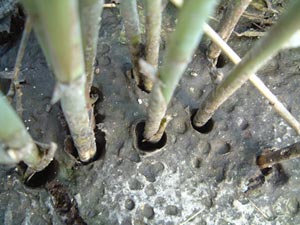Ecological and landscaped
Ecological
The design is energy efficient and reduces the use of complex industrial products generating greenhouse gas emissions. This ecological and on-site septage treatment principle meets the strong demand and growing interest for:
- developing non-sewered systems
- finding local solutions to the problem of treating septage, in a spirit of autonomy to the countryside, of reduced trucking and improved carbon footprints…
- finding sustainable development alternatives to the current intensive solutions with their high transport and energy consumption
- economic constraints favouring CW solutions, slightly less expensive in investment costs and far less expensive in operating costs.
This request is identified at different levels:
- nationwide: 5 million individual installations in 2006 + 200 000/ year (source: IFEN)
- Europe-wide: 20 million individual installations in 2010, potential of 100 million in the near future
worldwide: important potential for latrine equipment, optimum sanitation system for poor countries, currently inhibited by a lack of extensive septage treatment technology.
Landscaped
The plant merges with the local landscape:
- the receiving unit, the aerated storage tank, the buffer basin, the pumping units are built mostly underground
- the reed beds are mostly excavated and the reed heads, when they emerge from the basins (at maximum sludge level), are in harmony with the rural environment
- the technical buildings are of local architectural appearance.
The design follows the landscape charter of the Midi-Quercy County.

French constructed wetland’s history
The WTP was the biggest French constructed wetland plant when it was constructed.
Read the article